How to Look Good in Underwater Photos
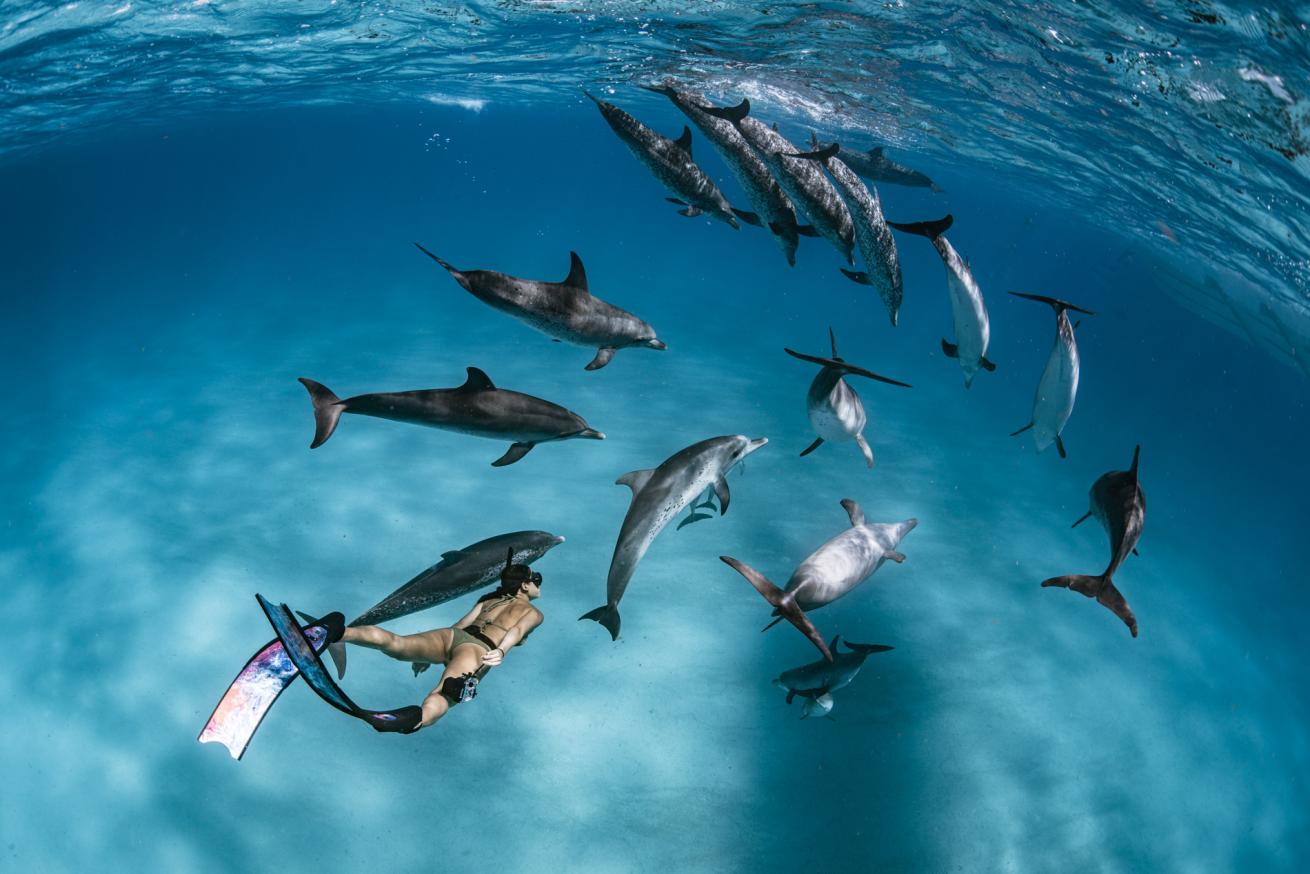
Jay ClueA pod of Atlantic spotted dolphins welcomes freediver Saaya Imai off the coast of Bimini. Note the position of her legs and upper body and how the face is turned, looking at the dolphin closest to her.
Last month, we received excellent questions, making it difficult to choose just one to write about in this month’s article. Currently, I’m on location in Fiji working on a brand shoot for PADI and Tourism Fiji, making it the perfect time to answer one of the questions that we received on Instagram. Candice asked, “How do I model really well for an underwater photographer?” Well, I bet it’s not what you might think!
Movement is Your Friend
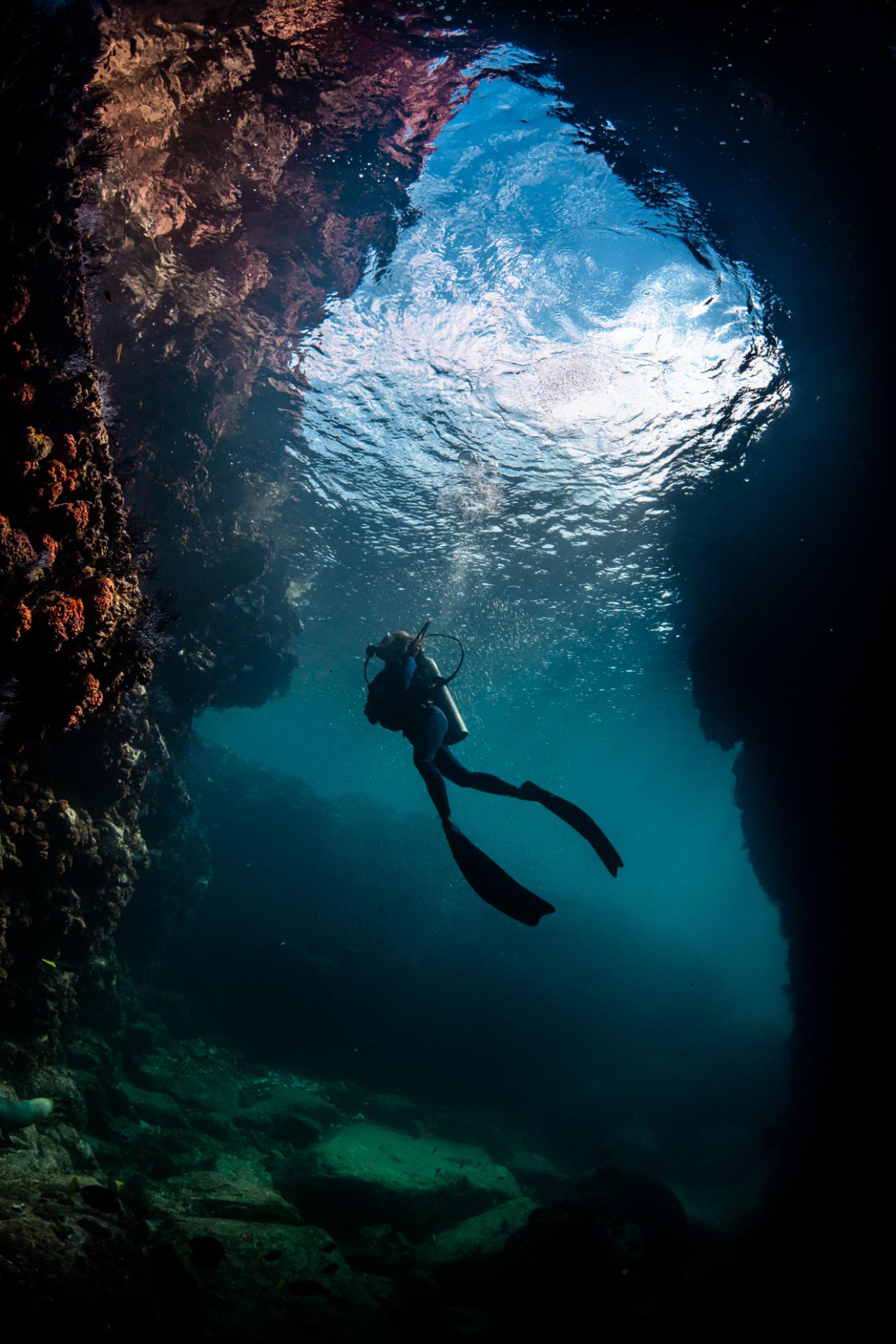
Jay ClueTo capture this shot I had Ana Posada swim from one side of the arch wall to the other while slowly ascending.
My biggest tip for how to look great in a dive photo is not to pose. Or at least not in the way you would typically think. Imagine this: you’re out on the beach taking in some gorgeous views, and your buddy grabs their phone to snap a pic of everyone. Then, boom! We all stop what we are doing, stare directly into the camera and freeze like confused deer in headlights, creating an average image. If you ever look a little deeper into your favorite underwater photos, you’ll notice something they all share. The divers are not posing, and they are (usually) not looking at the camera. Instead, they’re in motion. They might be swimming along or interacting with their buddy or marine life. This action brings a more natural feel to the photo while creating energy and emotion. It makes you imagine yourself in the picture and wish you were there experiencing it.
Whenever I do commercial shoots, I always give the models a briefing on how I will signal them to swim from point A to B underwater, which will lead them along a line that essentially brings them across the position I want for the shot that I’m trying to achieve, instead of telling them to just freeze in one spot. This skill is the same for many types of photography that utilize human subjects, whether it’s fashion, travel or weddings. People look better in motion. So, before you hit the water, you could chat with your photographer buddy to make a little plan and come up with signals that help your underwater communication.
Related Reading: Fiji After Dark: One Diver’s Journey Into Night Diving
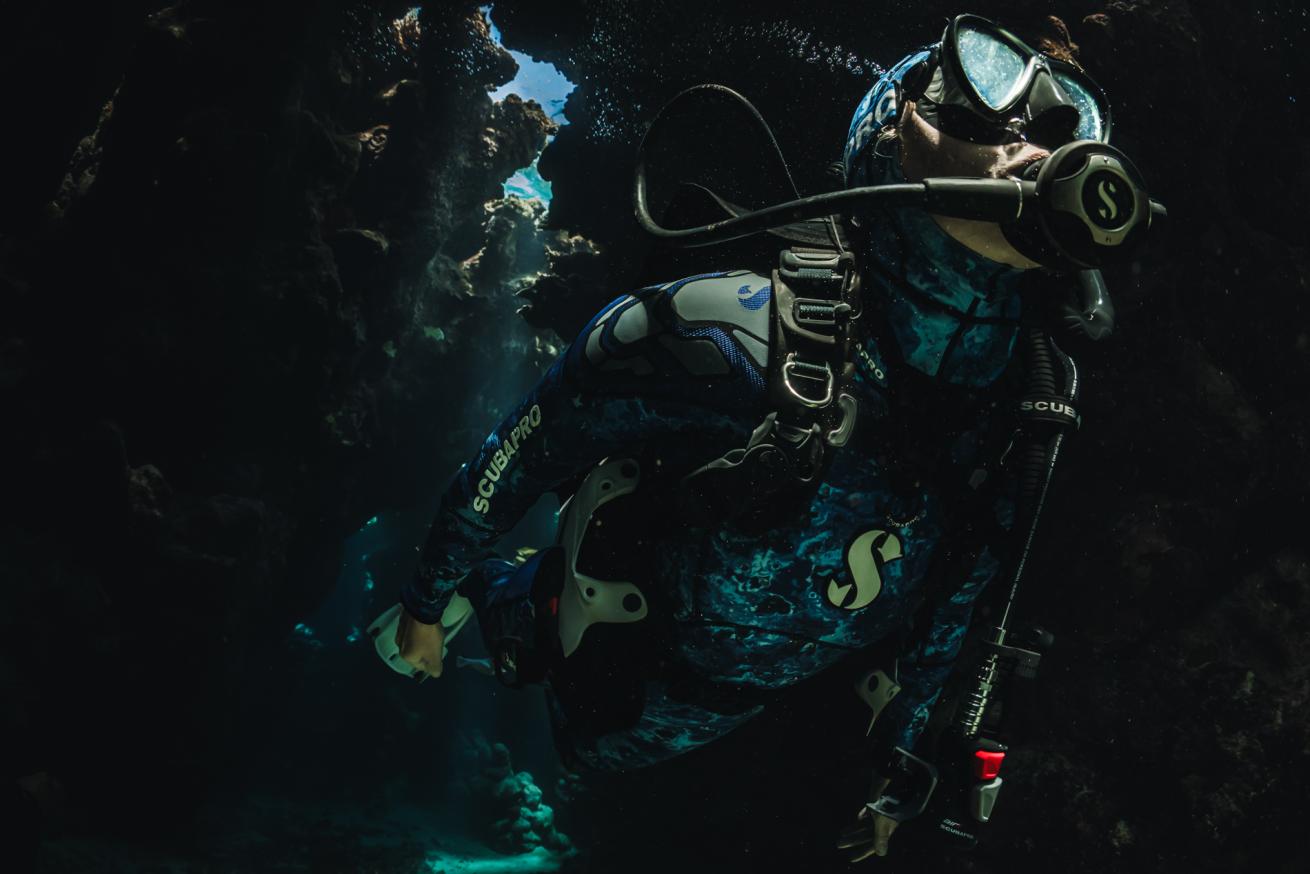
Jay ClueWhile swimming through the reef caverns in the Red Sea, we found a spot where a beam of light shined down from the surface just enough to illuminate Julie Andersen’s mask as she slowly swam through it to create a spotlight effect.
Slow Down and Exaggerate
Now that we know we want to be in motion, you want to make sure you’re moving slower than normal and exaggerating your movements. This gives the photographer time to compose and capture the shot. You’ll also find that certain movements look better than others. For example, while many of us frog kick, it usually looks better in photos if you do a flutter kick or long, slow freediving style kicks.
Frog kicks tend to look a bit weird when their motion is frozen in a photo, but they can look great if the diver is just hovering in trim. In some instances, such as scientific, technical or cave diving, frog kicking is the best form of finning. So, for those cases, you will want to focus shots on the return phase of the kick, concentrating on the kick and glide method, holding the fins in their return position while you glide to give time for the shot.
If you are doing the flutter kick, you’ll also want to make sure you are kicking from your hips, as this eliminates the ol’ pirate shot, where it looks like you’ve lost one leg from the knee down when you are at the top motion of the kick. Just make sure you’re far away enough from the bottom and have your buoyancy dialed in so you don’t accidentally kick up sand or the reef.
Related Reading: Finning Techniques All Divers Should Know
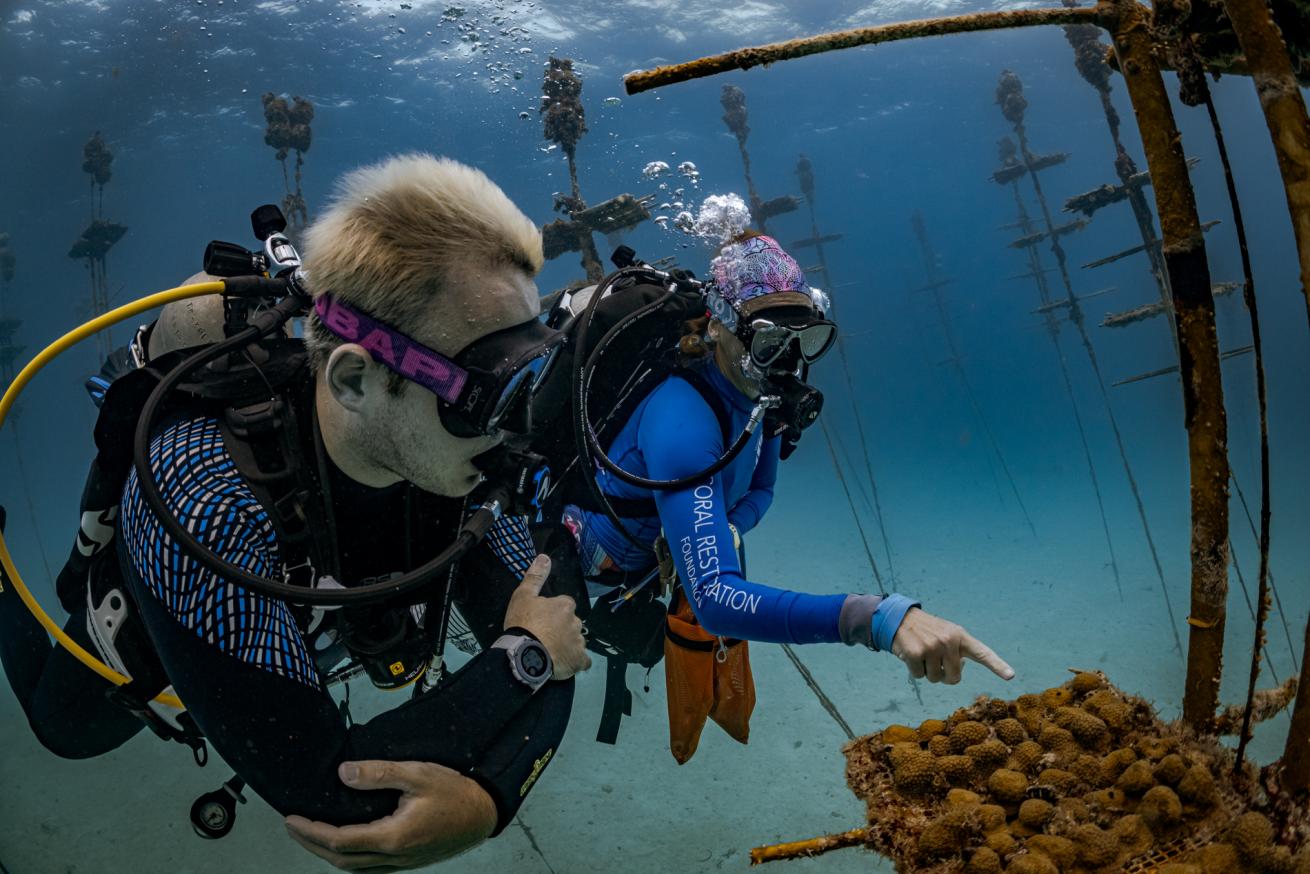
Jay ClueHaving the divers interact with their environment and each other helps build more of a story into the photo.
Look Everywhere Except at the Camera
From a young age, we have been taught to look at the camera and smile, which makes a shot feel too posed. For a more natural feeling, we want the photos to look candid. The goal is to make the viewer want to be in that moment, enjoying an incredible dive. It also helps create more emotion around the shot instead of feeling like someone's holiday card. I usually tell the model to look everywhere but directly at the camera. Then, if they find themselves looking in the camera’s direction, try to focus on looking to the left or right of my shoulders instead of at the camera or panning across from one shoulder to the other to create some motion.
Related Reading: Ask a Pro Photographer: How to Capture the Perfect Shot
Summon Your Inner Tyra Banks
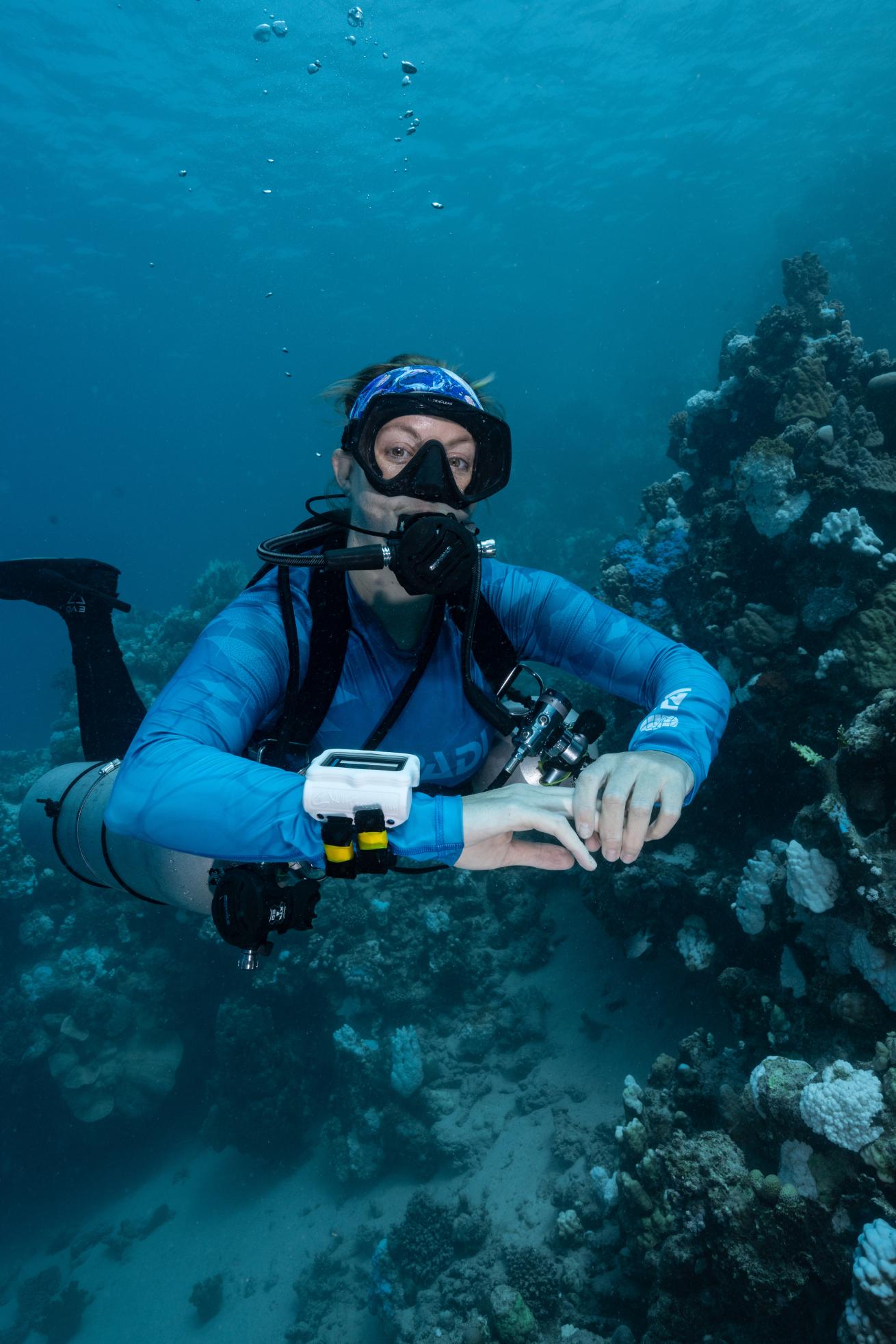
Kristin PaterakisScuba Diving's content director Candice Landau practices her smizing in Egypt.
Another big tip is to practice your “smize.” If you’re not familiar with smizing, it’s a term supermodel Tyra Banks coined that means smiling with your eyes. It lends itself helpful to diving photos because your regulator is covering that beautiful smile of yours. Plus, the angles of our masks tend to make divers look a little bit grumpy, so learning to smile with your eyes will help to bring out those awesome dive vibes. Confused about how that works? Don’t worry, Miss Banks has tons of videos you can find on YouTube to help you practice!
Bring Energy
Lastly, show energy and emotion through photos. We go diving because it’s an adventure and fun–not because we like to be frozen, hovering in trim. Let that underwater happiness shine through, and have fun with it. Now, get out there and practice. Tag me in your shots so I can see all the awesomeness you create.
About Jay Clue / Ask a Photo Column Sign-Off
Ask a Pro Photographer is a monthly column where Jay Clue answers your questions about underwater photography, cinematography and conservation storytelling. Clue chooses topics from our audience. If you have a question you’d like answered in a future Ask a Pro Photographer column, join us on Instagram at @scubadivingmag the last week of each month, or submit your questions using this form.

Cecilia Mar RuizJay Clue
Jay Clue is an accomplished photographer, educator and conservationist who uses captivating photography combined with passionate storytelling to inspire people around the world to cherish and preserve the natural beauty of our planet. His photos have appeared in a multitude of both print and digital media platforms, including Newsweek, National Geographic Traveller, Oceanographic Magazine and many more, as well as for major brands such as PADI, Sony, National Oceanic and Atmospheric Association (NOAA) and more. When not working on commercial projects, he shares his passion for photography and conservation by teaching workshops and leading unforgettable experiences with wildlife around the world. Follow him at @jayclue on Facebook and Instagram, where he’s always happy to answer questions and chat about photography.










